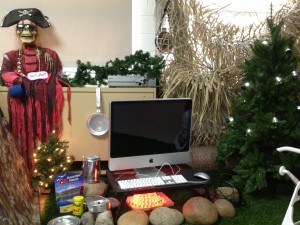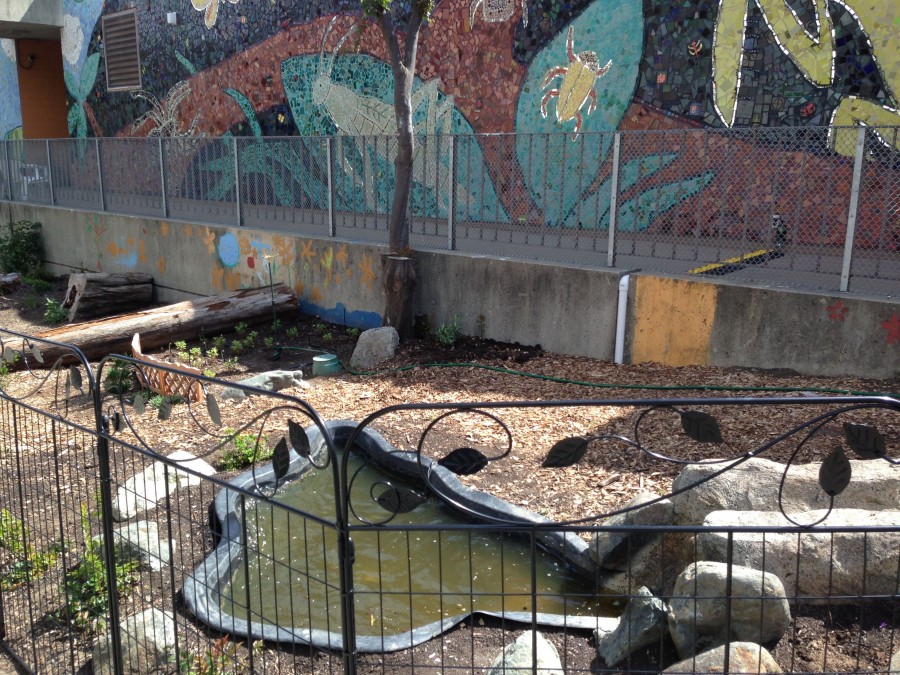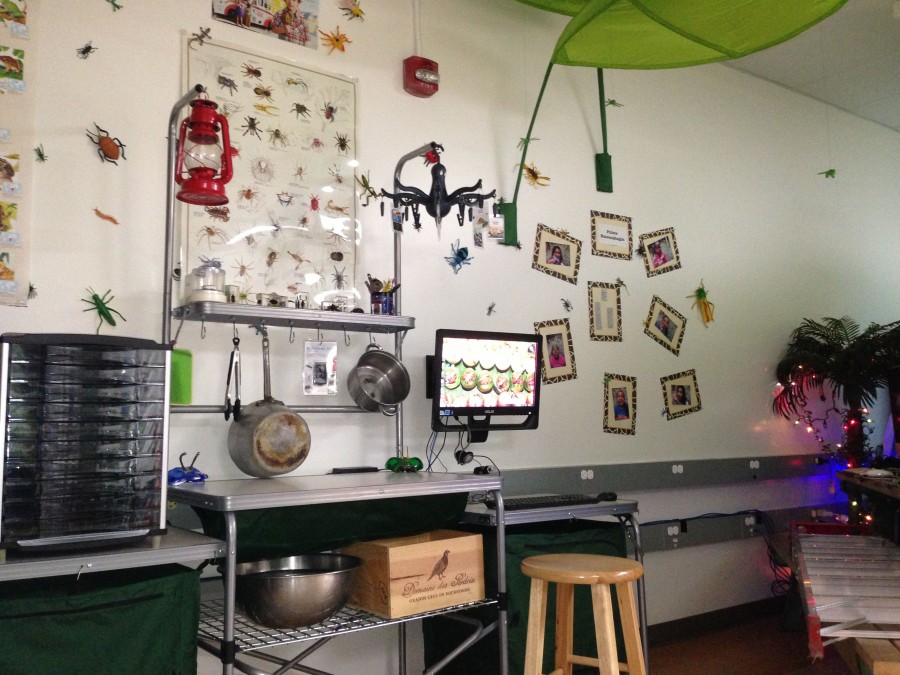A Computer Lab Grows in San Francisco

Originally appears in the Summer 2014 issue
MOST KIDS LOVE going to computer class. Having fun while learning has long been a key motivator for elementary school children. At Grattan Elementary School in San Francisco, computer teacher Philip Marcoccio has created a computer lab that recreates the natural environment indoors – a super fun experience. Philip weaves in appreciation of nature while teaching kids necessary computer skills such as word processing, internet research, graphic arts, and digital photography, and has named the lab Habitat H.O.P.E. (Helping Our Planet Earth). As a result, Grattan is considered one of the greenest schools in its district.
Marcoccio has taught at Grattan for fifteen years (and his wife for seventeen years – in 1996 they were married in the school cafeteria) and has been developing Habitat H.O.P.E. over a period of more than a dozen years. Each year he either builds upon the existing lab design or creates a completely new lab. When I first saw it around five years ago, the lab featured dinosaurs and information about prehistoric eras. Now, the lab has expanded wildly to include wonders such as a real pond, a bug kitchen, and a bird observatory. Most of the materials Marcoccio uses to create his naturalistic tableaus are recycled, as well as objects found through scavenging, created through
woodworking or simple art processes like papier-mâché. In the center of the room is a large touch screen which brings to life photos of different creatures for young children. Next to the entrance there is a big tent labelled “Queequog Oceanic Society,” with computer stations on both sides. Inside the tent is an Oceans-Rivers-Lakes area, complete with a real pond with miniature waterfalls and fountains, an artificial blue heron, imitation frogs, dragonflies, and ducks, and real ladybugs crawling around. On the back wall is a photo mural of a waterfall. Hanging from the ceiling are stuffed and hand-crafted animal creatures including birds, butterflies, and grasshoppers. Inside the large, three-sided tent, children have small-group instruction by the computer teacher or classroom teacher, with the help of large-screen displays of selected photos projected from an iPad. Next to this area there is a canoe and a dock with four work stations, followed by a space with a half-picnic table cut lengthwise with three more work stations.
Perhaps the most exciting innovation in this year’s lab is entomophagy, the consumption of insects as food. Students learn about eating bugs as a way to expand the food supply for starving populations and to save resources used to produce other types of food, and actually get to experience it firsthand. In his bug kitchen, Marcoccio dons a chef’s hat and whips up delicacies from The Eat a Bug Cookbook, using frozen edible bugs he ordered off the Internet. On the menu are dried and hard carobs (also known as St. John’s Bread because, according to tradition of some Christians, St. John the Baptist subsisted on them in the wilderness) with roasted crickets, meal worms with barbecue sauce, sowbugs and rolly pollies with tomatoes and teriyaki sauce. Kids find it challenging and fun to taste these exotic foods.
Across from the Oceanic Society tent is the wetlands area and the bat area. The bat area is called the “The World of Flittermice” – an old name for bats. Beside it is a camping tent with four computers. Next to it is an electric campfire, and also a small hand-cranked washing machine for washing rags instead of using paper towels. The next center is the Seed Station, where some seeds are used to feed birds outside, and some are planted in plastic containers. From there, the sprouts are transferred to the courtyard gardens outside in the playground, where vegetables and fruits are grown, constituting the Food Oasis.
Another center, or area of focus in the lab is the bird observatory. For that Marcoccio set up a bird house in the schoolyard gardens with a tiny camera inside it, bringing photos to an indoor computer screen for bird study. As if this is not enough, there are two more extensions of
the lab on the school roof – the weather station and the beehives. A homemade anemometer made of a revolving fanlike device with small paper cups is installed on the roof to measure wind velocity, while a barometer and thermometer record the humidity and temperature. All this data is viewed on a remote solar-powered station just outside the classroom. The beehives on the roof belong to the Student Beekeeper
Program, where students can help save bees, whose population has recently become threatened due to colony collapse. White beekeeper outfits with hoods with mesh screens in front of the face keep the kids safe from stings while they learn about the life cycle of bees and collect their honey.

When Marcoccio began building his lab, he received a few small local grants. Now he receives only occasional funding from Grattan’s Parent-Teacher Association. However, he was able to secure a San Francisco Community Challenge Grant for the Grattan Watershed Modeling Project, “From Mountains to Ocean,” the building of a model of the Hetch Hetchy water system in California. This teaches children where their water comes from, how it is used, and where it ends up. In this after school project, 20 kids are making a large model from styrofoam that will later be covered with cement, of the Hetch Hetchy water system, which brings water to California farms and cities. Hoses and a
pump transport water down a small waterfall into a reservoir and then to the gardens the children have planted around the school. When the model is finished it will be as long as one side of the school building. The San Francisco Public Utilities Commission has taken an interest in this project and is considering making a larger one for public viewing.
For teachers wishing to replicate some of what Marcoccio has accomplished, he advises, always think about the needs of your students first, then start with something you feel passionate about. Do lots of research, network, closely examine your surroundings/environment to see what is within reach, and be open to ideas that may at first seem way out of the box. Be adaptable, open to change, and don’t be afraid to take chances. And above all else, always have fun.
To view the photo-rich magazine version, click here.
Linda Lewin is substitute teacher in San Francisco Unified School District and a children’s book author. Her latest book is The Spiders’ Journey: A Modern-Day Myth, a tale of how spiders created the world wide web.
Leave a Reply
You must be logged in to post a comment.






